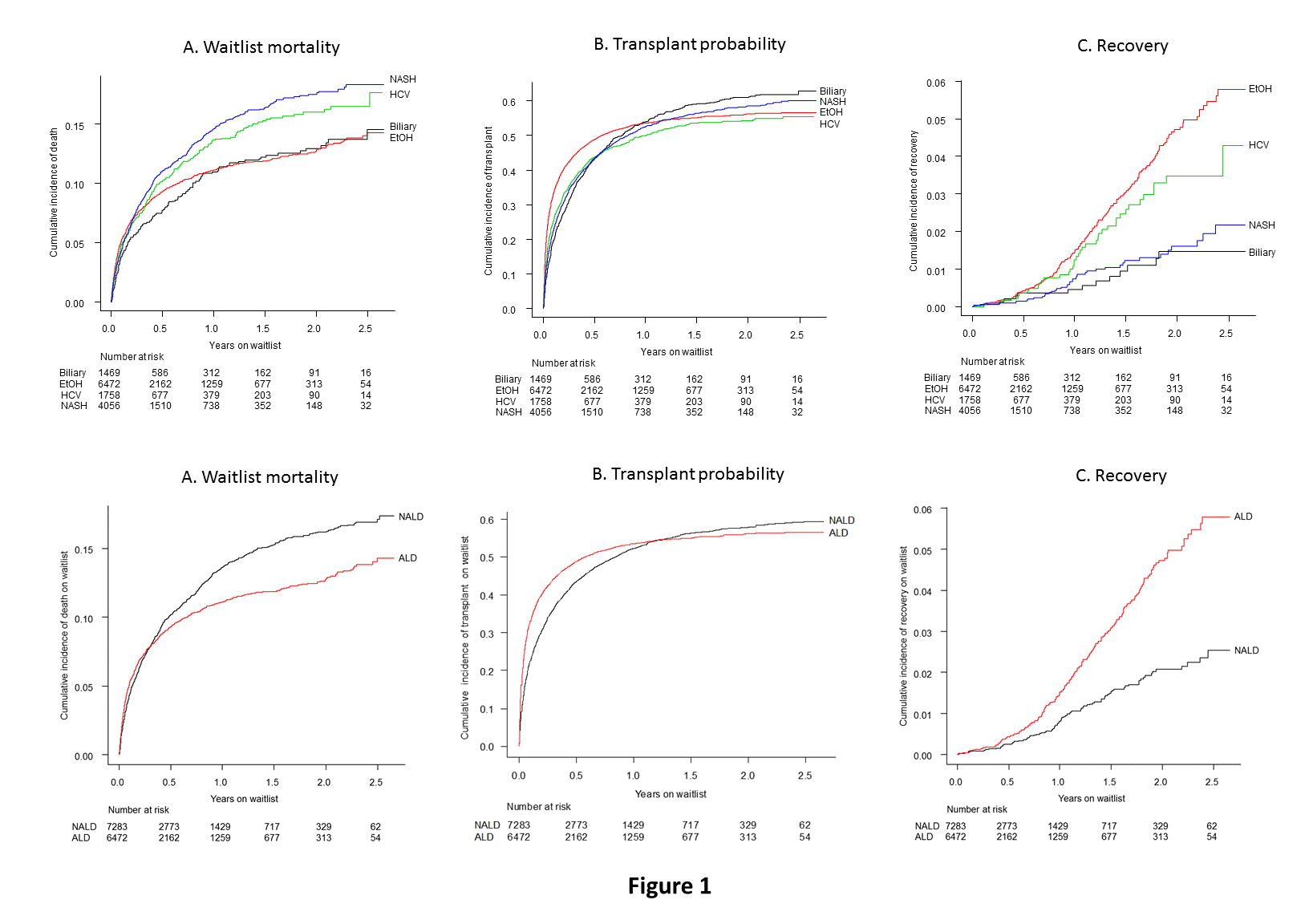Favorable Waitlist Outcomes in Patients with Alcoholic Liver Disease in the MELD-Na Era
Henry Ford Health System, Detroit, MI
Meeting: 2019 American Transplant Congress
Abstract number: 569
Keywords: Alcohol, Allocation, Liver transplantation, Waiting lists
Session Information
Session Name: Concurrent Session: Liver: Recipient Selection
Session Type: Concurrent Session
Date: Tuesday, June 4, 2019
Session Time: 4:30pm-6:00pm
 Presentation Time: 5:30pm-5:42pm
Presentation Time: 5:30pm-5:42pm
Location: Room 312
*Purpose: Alcoholic liver disease (ALD) is a common indication for liver transplantation. Patients with ALD are often required to be abstinent for a period of time prior to being listed. This may reduce disease progression while on the waitlist and therefore alter their waitlist outcomes compared to those with other disease etiologies. This study aimed to evaluate discrepancy of waitlist outcomes between those with ALD and non-alcoholic liver disease (NALD).
*Methods: Data for adult patients listed for liver or liver-kidney transplant after the introduction of MELD-Na score based liver allocation (Jan 2016-June 2018) were obtained from the OPTN/UNOS. The following were selected as major liver disease etiologies: ALD cirrhosis, hepatitis C cirrhosis, non-alcoholic steatohepatitis cirrhosis, primary biliary cholangitis, and primary sclerosing cholangitis. Patients with overlapping diseases and those with an exception score were excluded. Patients were categorized into different listing MELD-Na score groups (6-14, 15-20, 21-25, 26-29, 30-34 and >34) to identify variations of outcomes among the different score ranges within each etiology. Waitlist outcomes were studied by adjusting risk for recipient characteristics including age, gender, race, region, functional status, dialysis use, presence of diabetes, ascites and encephalopathy.
*Results: Patients with ALD showed the lowest waitlist mortality rate and highest recovery rate among disease groups (Figures 1 A-C), thereby patients with ALD were compared to those with NALD. A total of 6472 patients had ALD and 7283 had NALD. ALD patients showed significantly lower waitlist mortality (HR 0.82, 95% CI 0.74-0.90; p<0.001), higher transplant probability (HR 1.12, 95% CI 1.06-1.17; p<0.001), and higher recovery rate on waitlist (HR 2.23 95% CI 1.73-2.86; p<0.001) compared to those with NALD (Figure 1 D-F). Overall waitlist mortality stratified by listing MELD-Na score was lower in ALD patients compared to NALD patients in mid-score groups (score of 15-29) (p<0.05), whereas there was no difference in the lowest (6-14) and higher-score groups (30 or higher, Figure 2). Overall transplant probability was similar in ALD and NALD patients in the score groups of 26 or higher, whereas ALD had lower probability in the lower score groups (<26). ALD also showed higher chance of recovery in lower to mid score groups (6-29).
*Conclusions: ALD cirrhosis patients have lower waitlist mortality and better recovery while on the waitlist compared to patients with other etiologies. This was prominent in mid score groups. These results suggest that risk stratification and prioritization of liver allocation may need to be altered according to liver disease etiologies.
To cite this abstract in AMA style:
Safwan M, Collins K, Moonka D, Jafri S, Rizzari M, Yoshida A, Abouljoud M, Nagai S. Favorable Waitlist Outcomes in Patients with Alcoholic Liver Disease in the MELD-Na Era [abstract]. Am J Transplant. 2019; 19 (suppl 3). https://atcmeetingabstracts.com/abstract/favorable-waitlist-outcomes-in-patients-with-alcoholic-liver-disease-in-the-meld-na-era/. Accessed December 28, 2025.« Back to 2019 American Transplant Congress


